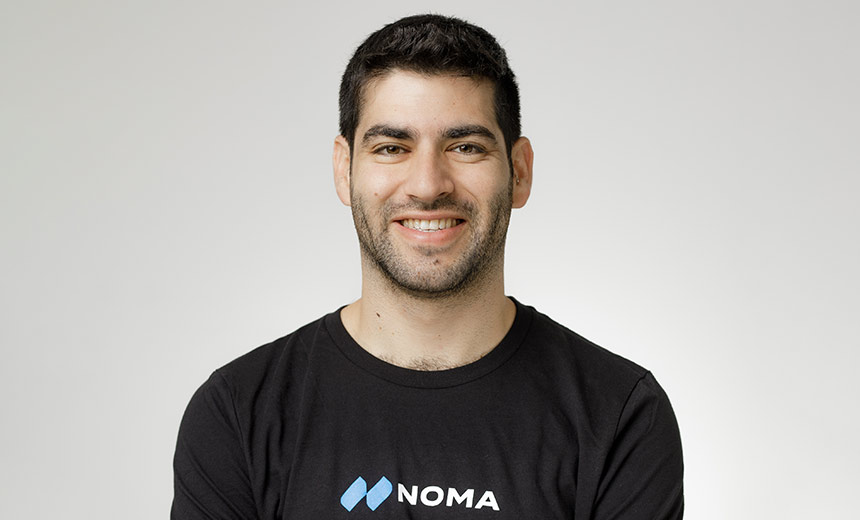Agentic AI
,
Artificial Intelligence & Machine Learning
,
Next-Generation Technologies & Secure Development
Red-Hot Startup Noma Security to Deepen Protection for AI Models and Agents

A startup led by a former Verint group manager raised $100 million to support enterprise adoption of agentic AI through strong security and governance.
See Also: AI Agents Demand Scalable Identity Security Frameworks
Noma Security said its Series B funding round will help the New York-based company secure not just AI models but also the growing number of agents taking actions autonomously, according to co-founder and CEO Niv Braun. The funds will enable Noma to boost its discovery and governance, risk management and AI runtime protection capabilities to meet the new demands posed by agent-based AI systems.
“In order to keep the pace and to make sure that we provide our customers the full security and governance that they need, we need to make sure that we support the many new kinds of technologies that are being released frequently,” Braun told Information Security Media Group.
Noma, founded in 2023, employs 43 people and has raised $132 million, emerging from stealth in October 2024 with $32 million of Series A and seed funding from Ballistic Ventures and Glilot Capital Partners. The company has been led since inception by Braun, who previously created Verint’s cybersecurity product line and served as cybersecurity group manager in the Israeli Military Intelligence (see: Malicious AI Agent in LangSmith May Have Exposed API Data).
Why Securing AI Agents Is Different Than Securing AI Models
Customer demand in large, security-conscious industries has surged at an unprecedented pace, Braun said, with a major pharmaceutical company deploying Noma’s technology into production within just a month, a speed they themselves had never experienced before. The Evolution Equity-led round will primarily be used to triple R&D capabilities and scale sales and customer success operations globally.
“We were not proactively even fundraising,” Braun said. “We understood that we’re going to do it very soon because we see the growth and we see the traction, and we understand that we want to scale super, super, super aggressively and fast.”
Most companies start with a niche product and eventually expand into platforms, but Braun said Noma took the reverse approach, designing a consolidated platform from day one to address discovery and governance, risk management and AI runtime protection. As agentic AI becomes more prevalent, Noma has rapidly expanded its coverage to include agent-specific discovery, behavior analysis and protection.
“We wanted a platform that’s consolidated by design,” Braun said. “It starts from discovery and governance. We help the enterprise to understand, ‘What do I even have?’ What kind of models they have, pipelines they have, what kind of agents they have and the deep context between the agents and the actions that they can take.”
An AI model might previously only return data in response to a prompt, but now, AI agents can take autonomous actions such as executing code, sending emails or issuing financial refunds, Braun said. For instance, an AI agent designed for customer support might start a conversation with one customer but mistakenly refund another, which traditional security professionals are not trained to detect, Braun said.
“AI agents take the basic risks that we already had there before, but increase the blast radius 100x,” Braun said. “So, the technical risks are there, but the potential impact is becoming huge.”
Why CIOs and Chief AI Officers Want Noma’s Technology
While security tools have historically been reactive purchases led by CISOs, he said Noma is increasingly being pulled in by CIOs and Chief AI Officers who want to unlock the full potential of agentic AI but need guardrails to do so safely. The CIO at a Fortune 100 financial institution explicitly said he wanted to deploy agents across the organization but needed Noma in place first to manage the risks, Braun said.
“A lot of times in the past, security companies were hoping that they will be positioned as business enabler and not blocker, and not like someone that slows things down,” he said. “Because of the base of this technology, and at the same time, the great business cases that enterprises find for this technology, I’ve seen it for the first time. I see firsthand that it’s truly about business enablement.”
Noma Security plans to end the year with approximately 20 U.S.-based team members solely focused on go-to-market operations, including sales, marketing and customer success, Braun said. This effort is critical to meeting growing demand from enterprise customers and ensuring those customers are onboarded and supported at scale.
“It’s not that now we are growing because of this money, but this will provide us the ability to do it even more aggressively,” Braun said. “And so we are adding a lot of bodies in both Europe and also in the U.S. We are hiring in the U.S., throughout the entire country.”
While companies including Protect AI and HiddenLayer had a head start in the AI security market, Braun said Noma distinguished itself through its architectural approach and deeper functionality. Rivals focused primarily on AppSec-style tools that integrate with CI/CD pipelines, he said, while Noma built integrations with cloud platforms, AI platforms like Databricks and no-code agent platforms like Salesforce.
“If they built the Snyk for AI, we built the Wiz plus Snyk for AI, because we have very different architecture,” Braun said. “We are not connected only to the CI/CD, we have more than 80 native integrations directly to the cloud providers and directly to AI platforms like Databricks.”
